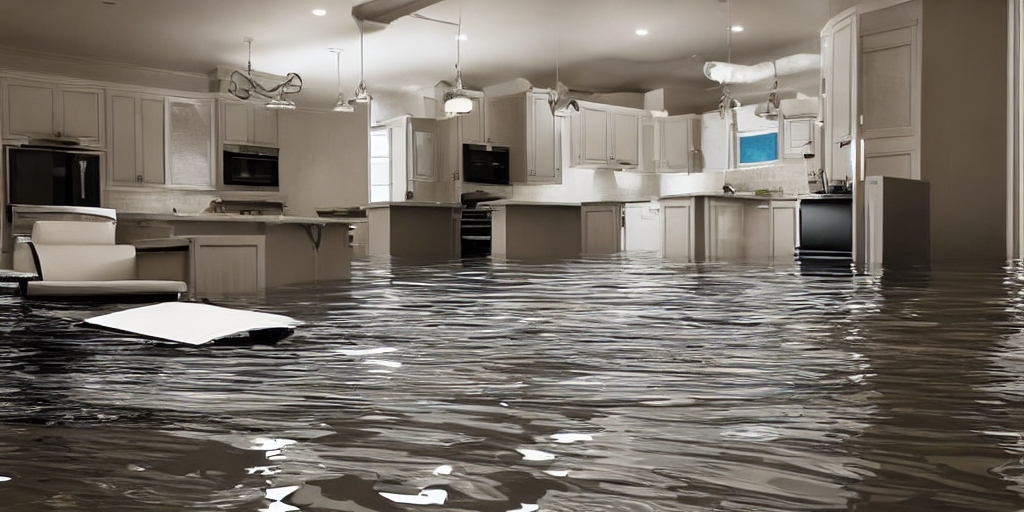Introduction
Water damage emergencies can strike unexpectedly, wreaking havoc on your home or business. In this comprehensive guide, we’ll explore the immediate steps to take after water damage occurs and provide valuable insights into the clean-up process. Whether you’re dealing with a minor spill or a major flooding event, knowing how to handle the situation promptly can make a significant difference.
Section 1: Immediate Actions After Water Damage
Water damage demands swift action. Here’s what you should do immediately after encountering a water-related crisis:
Assess the Situation: Begin by evaluating the extent of the damage. Identify the source of the water, whether it’s a burst pipe, appliance malfunction, or natural disaster.
Safety First: Prioritize safety for yourself and others. If there’s a risk of electrical hazards, turn off the power to the affected areas. Exercise caution to avoid slips and falls.
Document the Damage: Capture photos or videos of the affected areas. This documentation can be valuable for insurance claims and restoration professionals.
Contact Professionals: Reach out to water damage emergency clean-up professionals. Timely intervention can mitigate further damage and accelerate the restoration process.
Also Read: Water Damage Remediation Near Me: Understanding and Addressing Home Water Damage
Section 2: How to Clean Your House from Water Damage
After the initial assessment, it’s crucial to initiate the clean-up process promptly:
Remove Standing Water: Use pumps or wet/dry vacuums to eliminate standing water. The faster you remove water, the less damage it can cause.
Dry Out the Space: Ventilate the area and use dehumidifiers to expedite the drying process. This helps prevent mold growth and secondary damage.
Sanitize and Disinfect: Clean and disinfect all affected surfaces. This step is vital for preventing bacterial growth and ensuring a safe environment.
Inspect for Structural Damage: Examine the structural integrity of the affected areas. Water damage can compromise the stability of walls, floors, and ceilings.
Section 3: Consequences of Neglecting Water Damage Clean-Up

Mold Growth: Neglecting water damage clean-up can lead to mold growth, posing health risks and requiring more extensive remediation efforts.
Structural Damage: Over time, untreated water damage can weaken the structure of your property, potentially leading to costly repairs.
Health Hazards: Stagnant water can become a breeding ground for bacteria and other pathogens, posing health hazards to occupants.
Section 4: Clearing Water Damage – Professional Services and Costs
Water Damage Emergency Clean-Up Reviews: Explore reviews for water damage emergency clean-up services in your area. Customer feedback can provide insights into the reliability and effectiveness of different providers.
Finding Services Near You: When searching for “water damage emergency clean up near me,” consider local professionals for a prompt response and on-site assessment.
Understanding Costs: The cost of water damage clean-up varies. Factors such as the extent of damage, the type of water involved, and the necessary restoration procedures influence the overall cost.
Servpro Water Damage Cost: Get quotes from reputable restoration services, like Servpro, to understand the specific costs associated with their water damage clean-up services.
Section 5: Water Damage Restoration and Protocol
Water Damage Restoration Process: Learn about the standard protocol for water damage restoration. This includes assessment, mitigation, drying, and the final restoration phase.
Importance of Professional Restoration: Highlight the benefits of hiring professionals for water damage restoration. Their expertise ensures thorough and effective restoration, reducing the risk of long-term issues.
Also Read: Understanding Water Damage Remediation Near Me: A Comprehensive Guide
Conclusion
In the face of water damage emergencies, swift and informed action is key. By following the steps outlined in this guide, you can navigate the challenges of water damage clean-up, minimize potential risks, and restore your property to its pre-damage condition. Remember, the quicker you act, the better the outcome.










